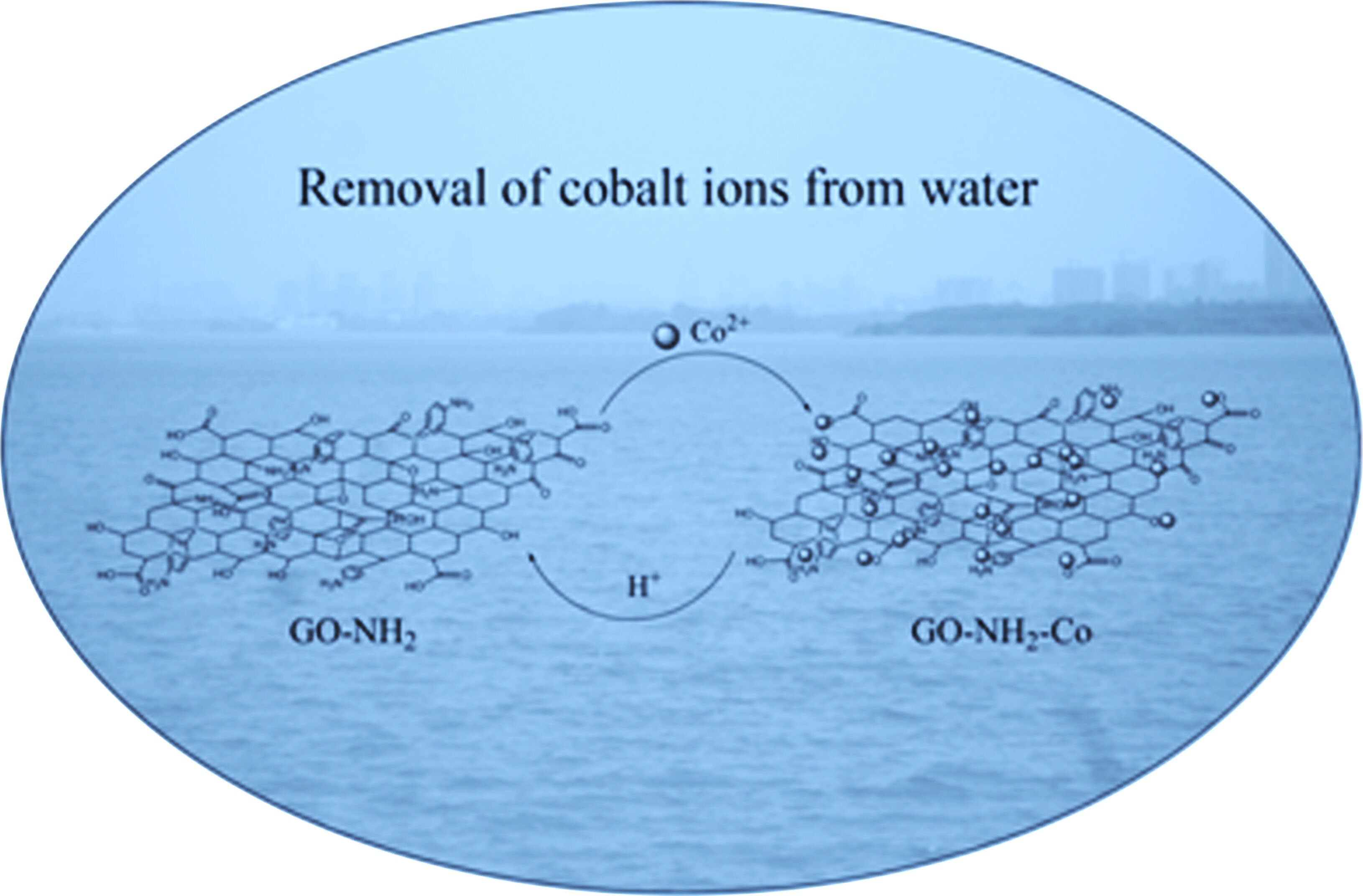With the intensive industrial development of the modern society, in particular the mining industry and nonferrous metallurgy, that is accompanied by the growing pollution with ions of heavy metals of wastewaters. Upon of these heavy metals, cobalt exists in the form of various salts in environment. It is widely used in nuclear medicine, enamels and semiconductors, grinding wheels, painting on glass and porcelain, hygrometers and electroplating. Everyone is exposed to low levels of cobalt in air, water and food. In small amounts cobalt is essential for human health, because it is known to be an essential element at trace level in human beings, animals and plants for metabolic processes. However, higher concentrations of cobalt can cause several health troubles, such as low blood pressure, lung irritations, paralysis, diarrhea, and bone defects, and may also cause mutations (genetic changes) in living cells. Moreover, radionuclide, 60Co is considered to be one of the most serious radionuclides in the environment. Therefore, the adsorption studies of Co(II) ions are essential for nuclear and hazardous waste management.
Recently, an important progress has been made in the removal of Co(II) ions using a newly designed amination graphene oxide (GO-NH2) nanocomposite by the research group led by Prof. Jinhuai Liu and " One Hundred Person of the Chinese Academy of Sciences" Prof. Xingjiu Huang at research center for biomimetic functional materials and sensing devices, Institute of intelligent machines, Chinese academy of sciences. The research team synthesized GO-NH2 nanocomposite by functionalizing the graphene oxide (GO) with aromatic diazonium salt. The as-prepared GO-NH2 nanocomposite maintained a high surface area of 320 m2/g. When used as an adsorbent, the GO-NH2 nanocomposite demonstrated a very quick adsorption property for the removal of Co(II) ions, more than 90% of Co(II) ions could be removed within 5 min for dilute solutions at 0.3 g/L adsorbent dose. The adsorption capability approaches 116.35 mg/g, which is one of the highest capabilities of today’s materials. Considering the superior adsorption capability, the GO-NH2 nanocomposite filter membrane was fabricated for the removal of Co(II) ions. The highest percentage removal of Co(II) exceeds 98%, indicating that the GO-NH2 nanocomposite is one of the very suitable membrane materials in environmental pollution management. The experimental results have been published in Journal of Hazardous Materials (J Hazard Mater. 2014 Apr 15;270:1-10. ). The reviews of this paper had evaluated that " The work was elaborate and the results were outstanding ".
This research was supported by the National Basic Research Program of China (2011CB933700, and 2011CB921404), the National Natural Science Foundation of China (21177131, 61273066, 11205204, 21105001, 21077106, 61104205), and China Postdoctoral Science Foundation funded project (20110490834).
